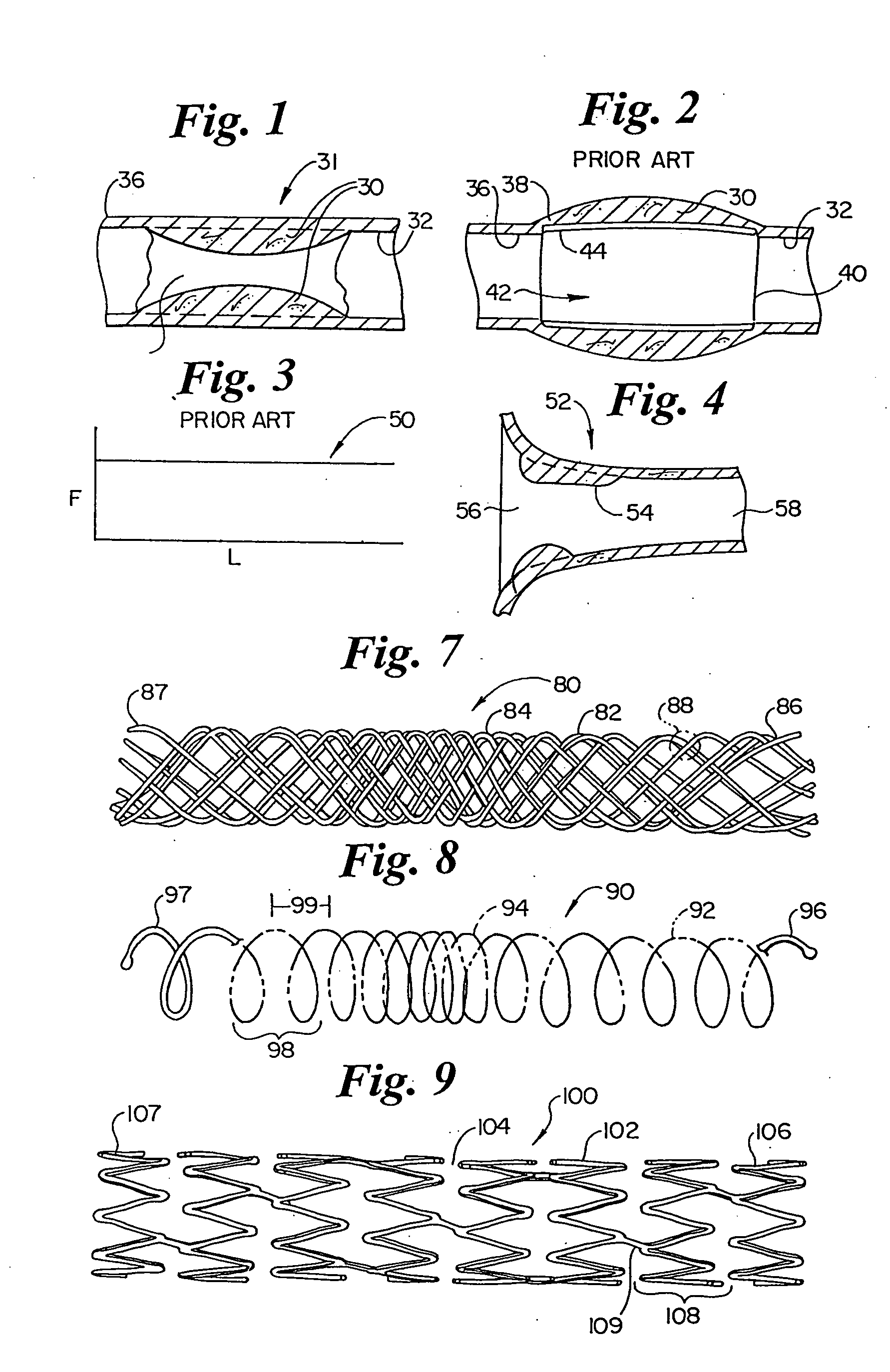Variable expansion force stent
a stent and variable technology, applied in the field of stents, can solve the problems of irritating non-stenose tissue, stent ends may flare outward, protruding into non-stenose tissue, and likely less than optimal for the wider region, so as to achieve greater expansion, less expansion, and greater force
- Summary
- Abstract
- Description
- Claims
- Application Information
AI Technical Summary
Benefits of technology
Problems solved by technology
Method used
Image
Examples
Embodiment Construction
[0032]FIG. 1 illustrates a stenosis 30, forming narrowed region 34, in a vessel 31 within vessel wall 32. Adjacent to stenosis 30 is a healthy vessel region 36. FIG. 2 illustrates a conventional stent 40 in place across stenosis 30, out of the blood flow channel as indicated at 44. Stent 40 includes a stent end 44, shown angling into healthy vessel area 36 at 38. Stent 40 as shown, has sufficient force to keep vessel 30 open against the rebound force of stenosis 30, and has more force than required at stent end 42, resulting in stent 40 angling into the healthy vessel wall at 38. FIG. 3 illustrates an idealized plot 50 of outward radial force, F, against stent length, L, for a conventional stent such as that illustrated in FIG. 2. As shown, the force is substantially constant over the length.
[0033]FIG. 4 illustrates a narrowing vessel 52 having a wide region 56, a narrowed region 58, and a stenosis 54. The narrowing vessel of FIG. 4 illustrates the geometry as found in an ostium su...
PUM
 Login to View More
Login to View More Abstract
Description
Claims
Application Information
 Login to View More
Login to View More - R&D
- Intellectual Property
- Life Sciences
- Materials
- Tech Scout
- Unparalleled Data Quality
- Higher Quality Content
- 60% Fewer Hallucinations
Browse by: Latest US Patents, China's latest patents, Technical Efficacy Thesaurus, Application Domain, Technology Topic, Popular Technical Reports.
© 2025 PatSnap. All rights reserved.Legal|Privacy policy|Modern Slavery Act Transparency Statement|Sitemap|About US| Contact US: help@patsnap.com



